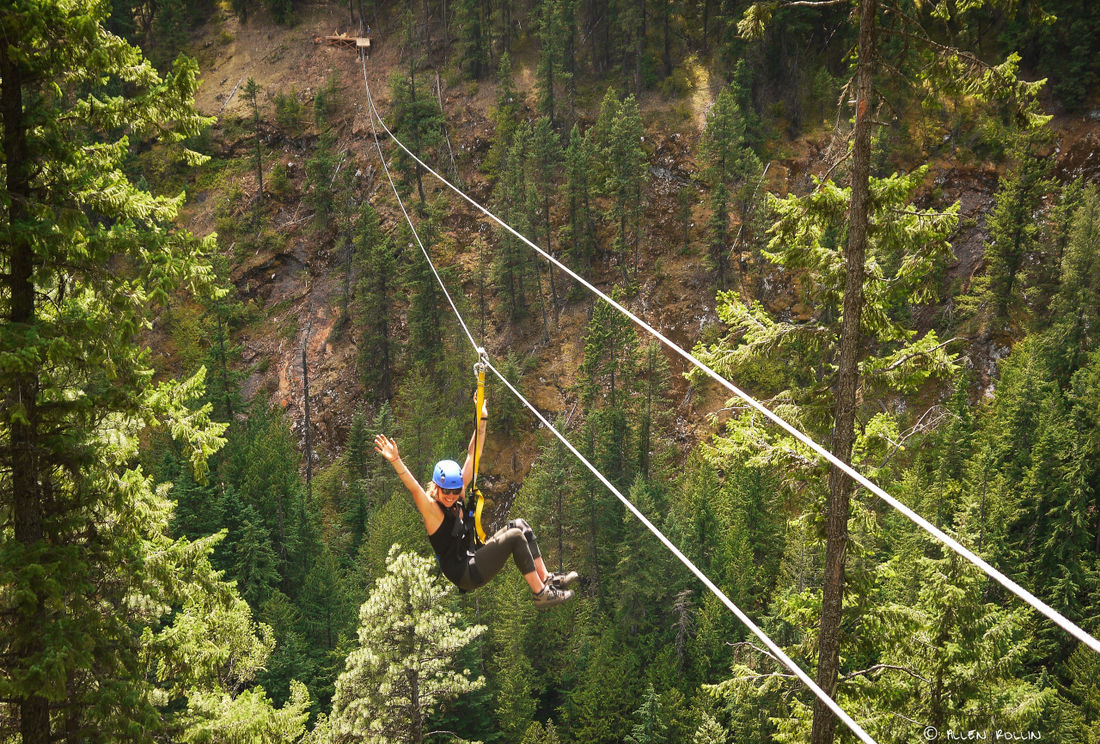Zip lining works by using a pulley system to send participants along a suspended cable, allowing them to move quickly and smoothly through the air. This thrilling activity combines gravity, physics, and engineering to provide an exhilarating experience for adventure enthusiasts.
As you glide through the treetops, gravity propels you down the line, while the pulley reduces friction and ensures a seamless journey. The layout of the zip line, the incline, and the angles involved contribute to the speed and enjoyment of the ride.
Understanding the science behind zip lining not only enhances our appreciation for this adrenaline-pumping activity but also highlights the careful planning and construction necessary to ensure a safe and unforgettable adventure. Get ready to zip through nature and feel the rush of the wind on your face as we delve into the fascinating world of zip lining.

Credit: www.zipkokanee.com
Understanding The Thrill And Mechanics
Zip lining is a thrilling adventure that takes you above the ground, offering an exhilarating experience unlike any other. Understanding the science behind it is key to appreciating the mechanics and excitement it entails. Gravity plays a fundamental role in zip lining, pulling you down as you glide through the air.
The harness you wear helps to harness potential energy, which is converted into kinetic energy as you zip along the line. It’s a combination of gravity, potential energy, and the mechanics of the zip line itself that create the heart-pounding experience.
So the next time you embark on a zip lining adventure, remember the science behind it, and embrace the excitement and thrill that comes with defying gravity.
Building A Safe And Dynamic Experience
Zip lining is an exhilarating adventure that combines thrill and safety in a fascinating way. The experience starts with the construction of a zip line, ensuring it’s both secure and dynamic. An important aspect is the choice of materials, prioritizing safety without compromising on fun.
Calculating maximum weight capacities is another critical factor to guarantee the integrity of the zip line. Each step in the process is meticulously planned to create a seamless and memorable experience for participants. By using quality materials and precise calculations, zip line operators can provide a safe and enjoyable adventure for all.
So next time you embark on a zip line adventure, rest assured knowing that the science behind it works to provide the ultimate thrill while keeping you secure.
Frequently Asked Questions Of The Science Behind Zip Lining: How It Works
What Is Zip Lining And How Does It Work?
Zip lining is an outdoor adventure activity where participants glide along a cable suspended between two points. Gravity and a pulley system propel them forward. Riders wear a harness connected to the cable, allowing them to safely soar through the air and experience the thrill of the ride.
Is Zip Lining Safe For Everyone?
Zip lining can be enjoyed by people of various ages and fitness levels. However, it’s essential to follow safety guidelines and any restrictions set by the zip line provider. Pregnant women, individuals with heart conditions or certain medical conditions may be advised against participating for safety reasons.
What Safety Measures Are In Place For Zip Lining?
Zip line operators prioritize safety and take numerous precautions. These may include regular equipment inspections, trained guides, weight restrictions, and proper harnessing techniques. Additionally, participants are often given safety briefings and instructions before their zip line adventure, ensuring a safe and enjoyable experience.
Conclusion
Zip lining is an exhilarating adventure that combines thrill and science. Understanding how zip lining works can elevate your experience to new heights. By using the fundamental principles of gravity, friction, and tension, zip lining allows you to soar through the air with ease.
The pulley system, consisting of a cable, harness, and trolley, ensures a smooth and controlled ride. The force of gravity propels you downhill, while the tension in the cable keeps you suspended in mid-air. Friction, generated by the trolley, slows you down just enough to land safely on the other side.
The engineering marvel behind zip lining showcases the brilliant fusion of physics and human ingenuity. As you conquer your fears and embrace the rush of adrenaline, know that the science behind zip lining is working harmoniously to provide you with a unique and unforgettable experience.
So, strap in, take a leap, and let gravity be your guide in this exhilarating adventure!